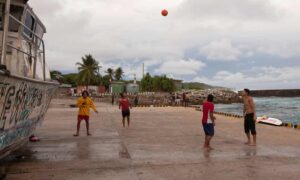
Fifty years ago, a diabetes survey in the Republic of Nauru concluded that a third of Nauruans had type 2 diabetes. It was the first time the relatively uncommon disease was found to be widespread in a national population, and it led researchers to raise the alarm about a potential “global diabetes epidemic”.
At the time, there was little other research about population-scale diabetes, so the researchers made some assumptions to explain their data and propose a way forward. First, they said that diabetes in Nauru was probably caused by a genetic predisposition of islander populations to diabetes (a hypothesis later critiqued by its original author, and which remains unsupported by data – archaeological, anthropological or genetic); modernisation of islander lifestyles leading to a high-calorie diet (a theory my colleagues and I have since challenged); and reduced physical activity, and obesity. Second, they suggested these causes could be best addressed by nutrition and lifestyle education.
Subsequent surveys have built on these assertions, and for 50 years researchers have focused predominantly on diet and physical activity as both cause and cure for type 2 diabetes in Nauru.
Despite decades of interventions informed by these surveys, type 2 diabetes remains a leading cause of death and disability, along with heart disease and stroke, in the Pacific island nation. There is also significant diabetes-related disability, from gangrenous or amputated limbs to blindness to kidney disease, and many people experience debilitating side-effects of diabetes medications. Life expectancy remains low: about 60 years for men and 66 for women.
How is it possible that 50 years later, when evidence points to little improvement, we are still making similar assumptions and coming to similar conclusions about type 2 diabetes?
In the early 2010s, I set out to study obesity in Nauru. Building on previous research, I aimed to trace how people’s diets and physical activity had changed throughout the 20th century. Yet during my year on the island, it became clear that diet and activity were not the most significant changes the people of Nauru felt they had experienced.
I pivoted my research to focus on their voices. I documented histories of low socioeconomic status, social stress and fraying families linked to colonialism, wealth, poverty and land loss on the island. I learned about changes linked to globalisation, medicine, mining, technology, migration and two world wars. I avoided drinking from the national desalination plant, which often had high levels of bacteria. I inhaled the fog of fine white dust from the phosphate mines that left a powdery film of “Nauruan snow” through houses and on my glasses.
